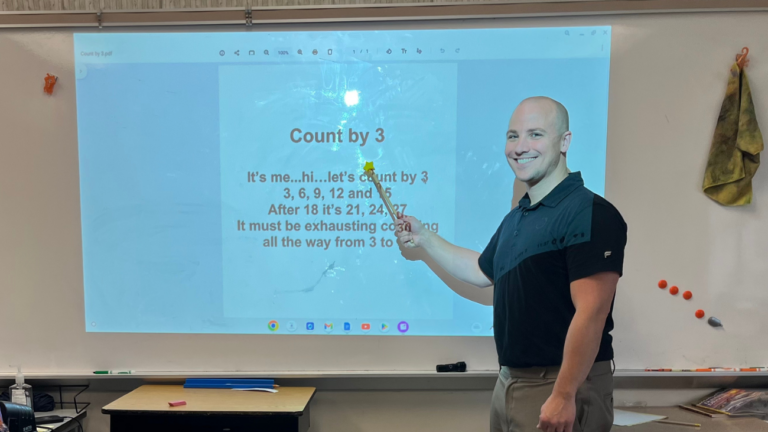While working my way through college, I held the illustrious position of part-time IHOP waitress. There in my syrup-sticky blue apron, I had no idea serving short stacks would be such a crucial component of my teacher prep process. While I wish I found tips on my tables when the bell rings to end class, here’s how the skills I learned in my pancake wielding days have “served” me well as an educator.
1. Conflict resolution

Difficult customers help you prepare for future problem resolution with parents. Only now, issues occasionally end with, “Would you like to speak with an administrator?” rather than, “Would you like to speak to my manager?”
2. Patience
In spite of my best efforts, sometimes people just wouldn’t listen to me when I was serving them. As my livelihood depended on me keeping my cool, I now handle the occasional need to repeat directions (over and over and over) with grace and an only a slightly feigned smile.
3. Multitasking

I could have 10 tables to attend to and still, individual diners would keep me tethered tableside, sharing intimate life stories way beyond my time constraints. So I had to learn to listen attentively, while multitasking. Now as a teacher, cue little Johnny telling me about his new puppy while I’m simultaneously taking attendance, prepping for a fire drill, answering a principal email, and trying to figure out who just threw a sandwich across the room.
4. Stamina

Quick! Think of another job that keeps you on your feet as much as being a teacher. Restaurant server, perhaps? My legs were primed when my first day in the classroom rolled around.
5. Tidiness

Have you ever seen the hot mess a toddler can create in a restaurant? Turns out that cleaning up a food tornado under a high chair makes the paper scraps left behind by a cut and paste activity look like child’s play.
6. Letting go

Everyone knows it’s the server’s fault when the table next to you gets their order first even though they sat down later, right? Wrong! The kitchen cooked the orders, and I was at their mercy for how and when they arrived. It prepped me nicely for handling the politics that dictate how I can deliver content. In either situation, it’s my smiling face on the receiving end of the complaints towards the system.
7. Meeting individual needs

Differentiating classroom instruction looks a lot like holding the pickles for picking eaters and staying mindful of food allergies for special orders.
8. Appreciation (and lack thereof)

Fun fact: minimum wage for tip-based professions in the United States is $2.13 per hour. While gratuities make that wage more reasonable, there is nothing like pouring your heart into every cup of coffee only to get stiffed by a table. The weekend and night shifts where I served tables without pay foreshadowed the unpaid overtime on nights and weekends when I became an educator. On the other hand, unexpectedly generous tips brightened my day almost as much as unexpected cards and gifts from my precious students.
So teacher friends, the next time you visit a restaurant, be especially kind to the kindred spirit busting their tail to bring you breakfast. And, just between you and me, now you know why I circulate my classroom asking my students if they enjoyed their lunch while *almost* reaching out to fill their empty water bottles.


